Threads of gentleness across hemispheres and continents
[Plant Archetypes] Mallow relatives connected by lines of softness (Part 1 of 3)
A widely known herbal ally Marsh Mallow Althaea officinalis, found in banks of rivers and salty marshes, has long been used as a soothing healing herb.
One of its relatives, a discreet higher altitude wildflower named Mallow Sidalcea glaucescens, this one being a flower essence plant, also holds this name that points us directly to their whole botanical family, the Malvaceae.
Come along with me, as we wander through the threads that weave these, and a number of other Malvaceae plants, as we go through this three part series of posts.
My first thread to the Malvaceae flower essence plants
At a glance, you may recognize some traits, when contemplating Mallow Sidalcea glaucescens, a plant that shows up as a common late Spring flowering plant growing in relatively higher elevations. Look at it and tell me what you see!
When I first saw it, only in pictures, I recognized similarities and made an immediate connection with flowers I had seen in abundance while growing up in the tropics: exuberant hibiscus, in multiple colors, that I will bring to this narrative as we go.
In classes with my mentor Richard Katz, who pioneered these studies, I was taught that this Mallow is indeed related to Hibiscus, that is another flower essence plant. When I got to meet this Mallow in person, I realized how, in its adaptation to drier conditions, it produces smaller flowers, of delicate grace and beauty.

And I learned that the Mallow flower essence has been found to help people become more open, when they are safe, to warmer ways of interacting with others. It helps people let go of “walls” that keep them less approachable, so they can be open to exchange with warmth in their connection with others.
An ancient herbal ally: Marsh Mallow Althaea officinalis
More recently, as I study the herbal properties of plants in this botanical family, I am so happy have become acquainted to this tried and true medicinal plant, of which all parts can be used as medicine, particularly the roots.
The flowers of Marsh Mallow Althaea officinalis can be used to beautify dishes (this one somehow resembles my flower essence Mallow), the whole plant being safe!

What I have also learned is that this is one of the few well known medicinal plants to hold both safety of use, along with emolient and humidifying qualities.
While a great majority of effective medicinal plants tend to be drying, Althaea offers moisturizing qualities, and is very often combined to different herbal blends when it is necessary to compensate for dryness. Tinctures prepared from its root, well seen in this illustration, impart its strongest moisturizing and soothing properties.

Native to Europe, Western Asia, and North Africa, this plant has been a long term helper of humans since ancient times. Inspired on its name, Marsh Mallow (also referred to as the Mallow family) the Malvaceae family has been named.
In warmer latitudes, Hibiscus plants and flowers thrive
The Hibiscus flowers I had seen growing up looked more like these, a whole variety of colors, always with that combination of traits in its form and expression.
As a kid, I knew it to be safe to play with them, touch them, collect their petals. Their abundance allowing for colorful arrangements. Later, I often saw women picking up a hibiscus flower to add to their hair when going to a party at the beach.

And I would always see them in gardens, where there is plenty of sun. The most expressive of these are the red Hibiscus, that for me, represent the hallmark of the exuberant outgoing quality that this flower imparts.
As a flower essence, the Hibiscus has been documented as one that enhances the integration of soul warmth and bodily passion, for sexuality and sensuality.
Based on my observation of how it shows up in my Flower Essence Practice, I would expand on this - I find that Hibiscus frees our radiance and exuberance, our openness to more expansive and freer self expression. And I see it as being helpful at different stages of life, including in preparation for the act of giving birth.
Hibiscus plants are native to warm-temperate, subtropical, and tropical regions around the world, including Asia, Africa, and the Pacific Islands. While the exact origin of some of its species is debated, they are thought to have originated in regions like Southeast Asia, possibly China or India. Now, they color gardens everywhere!
Growing at the heart of the Australian continent
Familiar with the previous two Malvaceae plants, it came as quite a surprise for me to meet, in the proximities of Uluru, at the very center of Australia (also called Ayer’s Rock), another relative, the Sturt Desert Rose Gossypium sturtianum, from which Ian White makes one of the Bush flower essences.
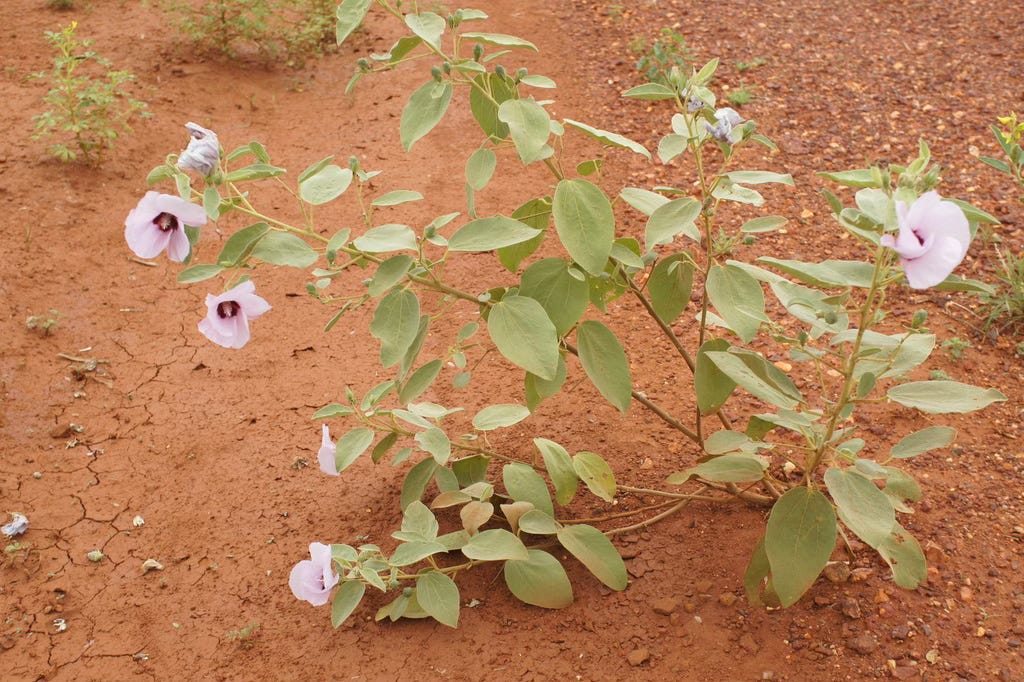
Ian White, founder of the Bush Essences, led us through a visit to the very center of Australia where we met some of the Bush Essence plants in their habitats. And I actually got to see and take many pictures of this one!
It is a generously sized flower, that reminds me of the Hibiscus I was so familiar with, but it grows in such a different environment! Look at the red soil in the image above.
Explore its relation to its environment: look it up on iNaturalist!
The Sturt Desert Rose Gossypium sturtianum, as a flower essence, embraces those who are capable to feeling remorse (not everyone is), helping these individuals accept themselves more fully, releasing guilt, regret and remorse. I would say it helps us embrace ourselves with full warmth and acceptance, so we can truly open up to life.

Sturt Desert Rose’s link to the cultivated cotton plant
Now this extra thread of connection I did not anticipate, and I was pleasantly surprised to learn! My colleague Kathleen, when researching this family with me for our most recent course on Botanical Families and flower essences, showed me this.
She pointed us to the species of this plant, the Sturt Desert Rose Gossypium sturtianum as directly related to the Cotton plant grown throughout the world. They both share the same species name: Gossypium.

Gossypium hirsutum, the most cultivated cotton species around the world, happens to be the only species in this Botanical family that has toxicity to it, but it is, nevertheless, the one that has been more frequently grown for human use.
Trauma runs through cotton’s cultivation history
The history of cotton cultivation also carries the shadow of one of the harshest and most cruel phases of the exploitation of humans, when enslaved people were put to work as expendable labor in cotton plantations. So much healing is needed for us to embrace and repair the scars of this abuse so cruelly perpetrated.
Cotton enfolds us throughout our life cycles
I do not have a flower essence of this flower, but in our lives, at any moment in time, we have woven cotton gently embracing us. New born babies are dressed in soft cotton garments; if we are privileged, we get to sleep wrapped in soft cotton sheets; even the gentle bandages that protect our tender wounds are made of soft cotton.
As humans, for a long time we have taken this plant along with us in our relocations. Humans have woven cotton from so far back in time that we can’t really date how old and well established our relationship with this plant is.

I highlight this as one of the significant connecting threads, along with a few others that will follow, as we weave stories of this whole plant family together.
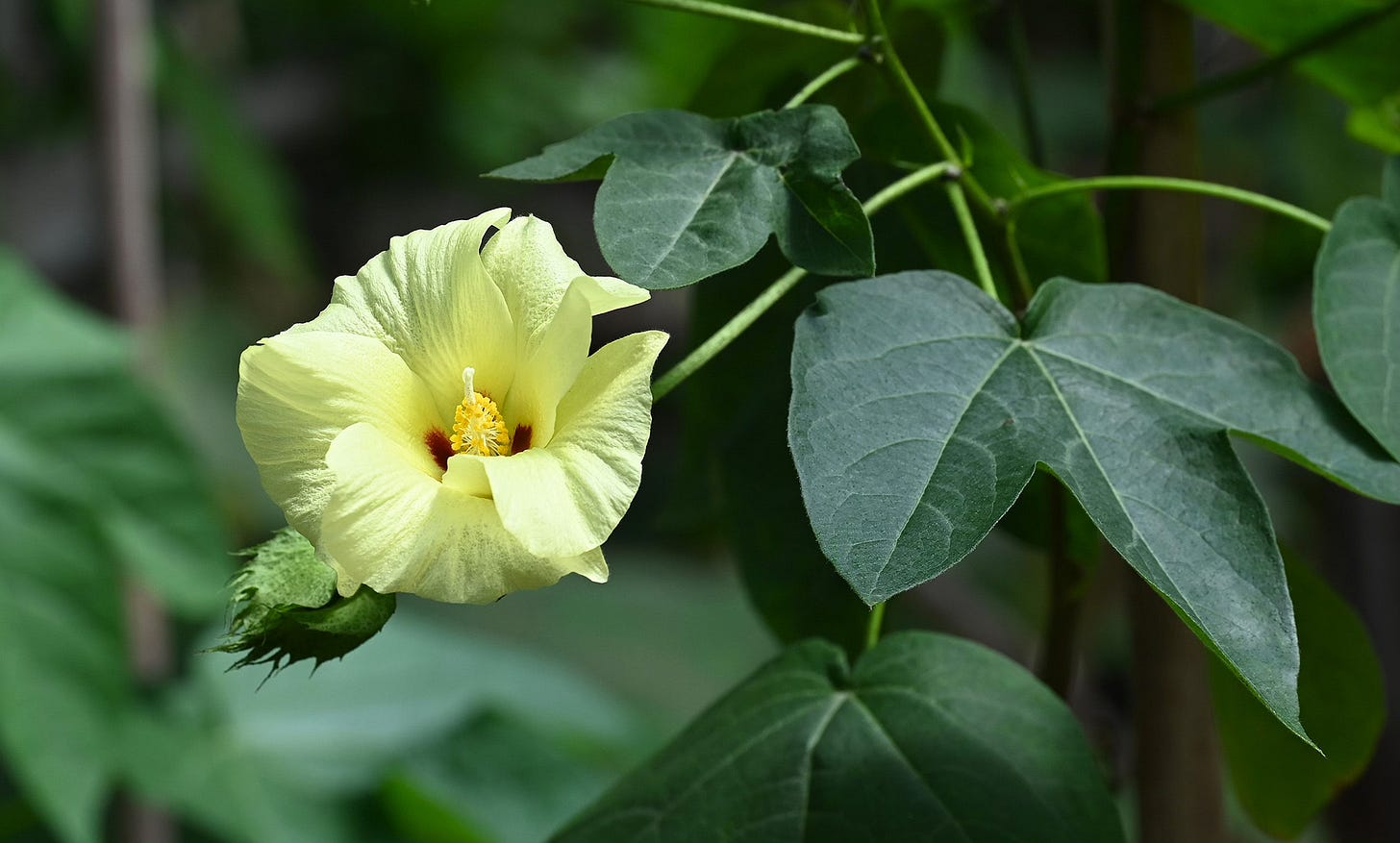
Stay tuned for the sequel of two more upcoming posts, continuing to weave the threads of gentleness through the Malvaceae botanical family plants.

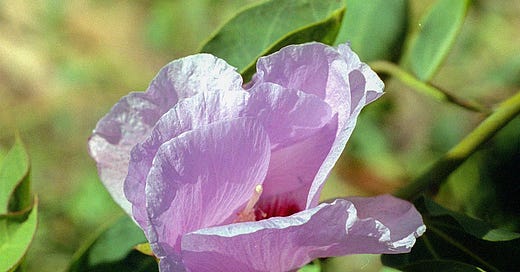


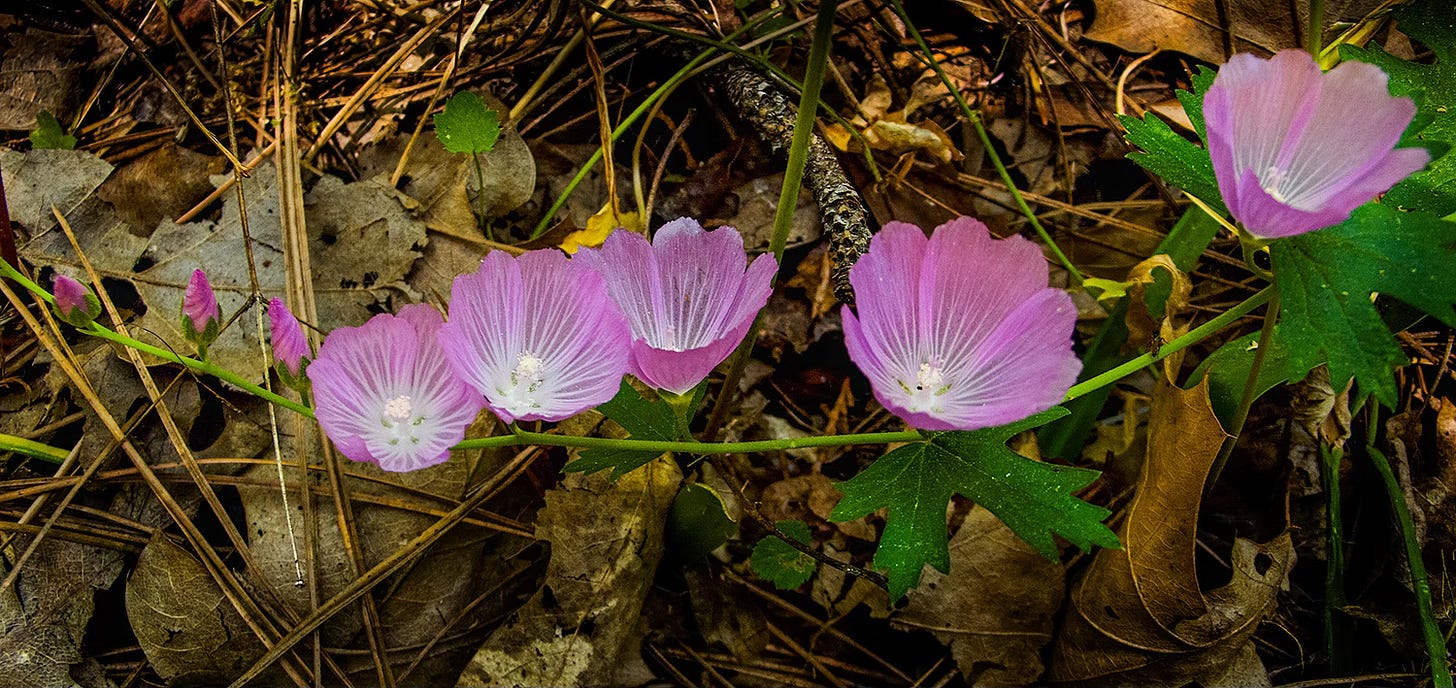
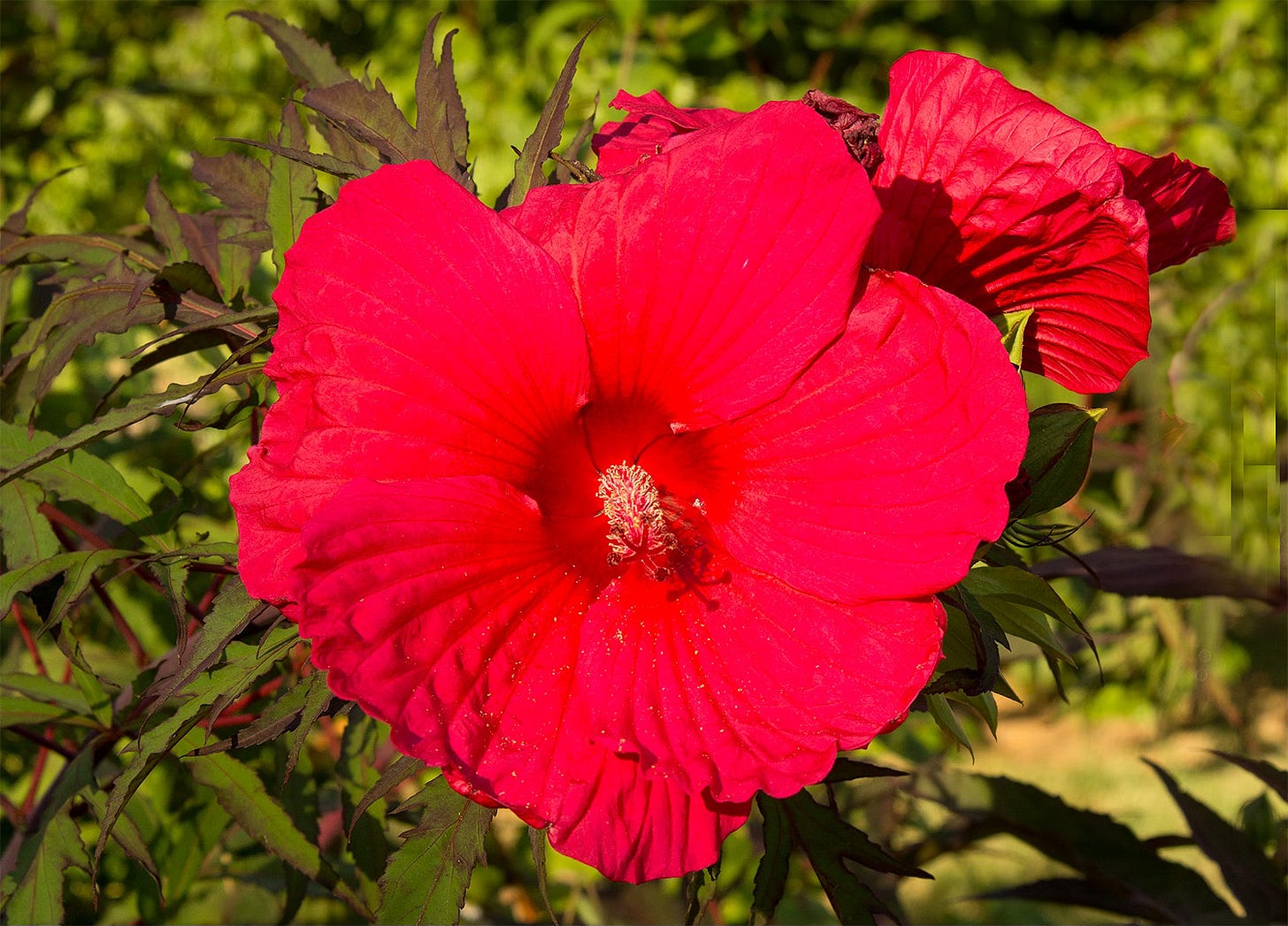

Always so fascinating to read Ruth.
Thank you 🙏